How To Temper Chocolate Without a Thermometer
We
support our readers with carefully chosen product recommendations to
improve life at home. You support us through our independently chosen
links, many of which earn us a commission.
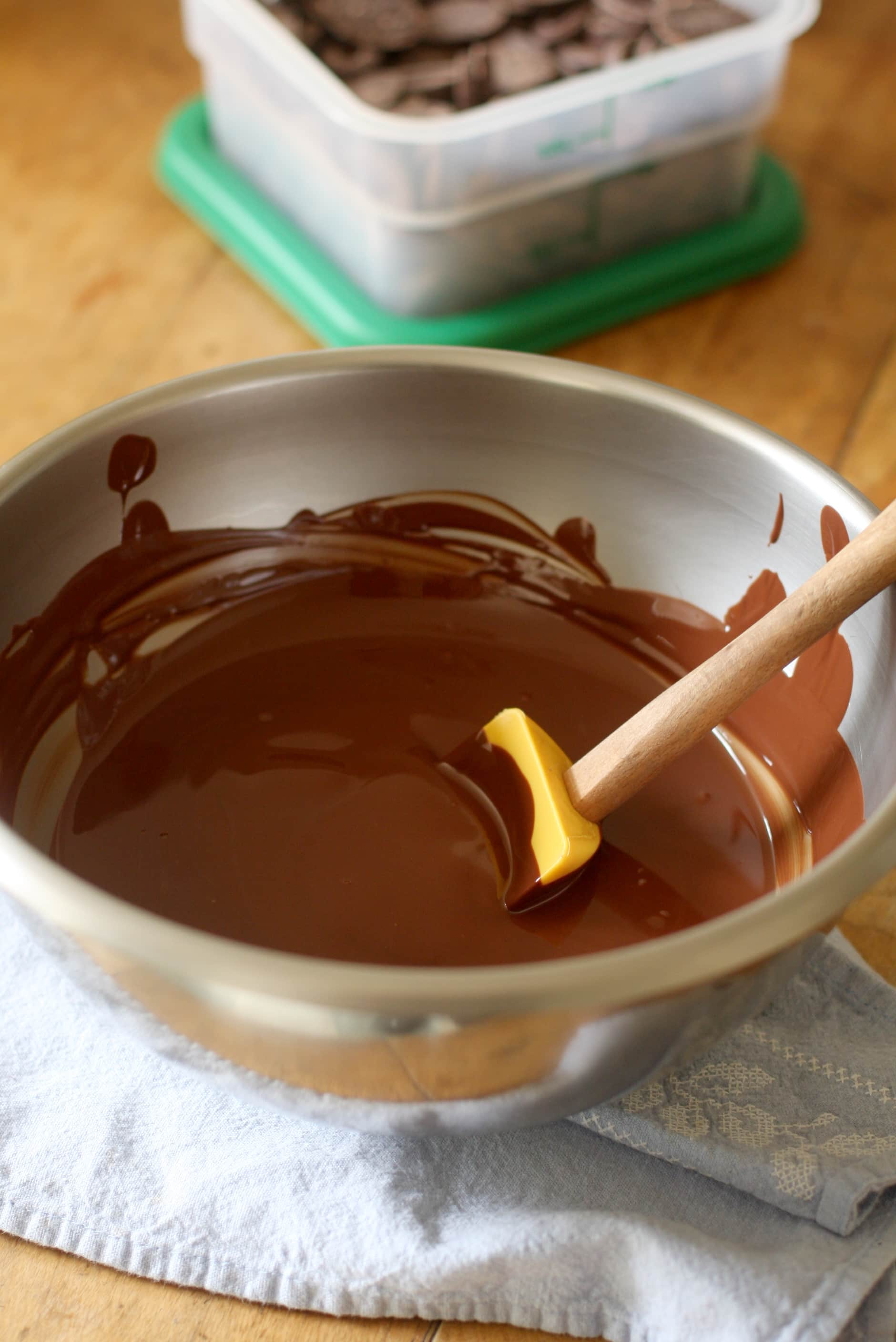
We’re excited to introduce you to Alexandra Whisnant, chocolatier and owner of a small, avant-garde chocolate company called gâté comme des filles
(‘spoiled like girls’) located in Paris and the Bay Area. Next week she
will show us how to hand dip chocolates — but before we dip, we need to
understand how to temper. Alexandra’s method for melting and tempering
chocolate, which she learned at Le Cordon Bleu Paris and then perfected
as a pastry cook at Chez Panisse, is unusual in that it doesn’t rely on a
thermometer.
Watch: Arie's Celeb Pepper | Kitchn's Pinterest Challenge
While in Paris, she launched her chocolates company, gâté comme des filles,
selling her fresh, hand-dipped chocolates in pop-ups events around the
city. Now she is back in the Bay Area to continue to make beautiful,
eclectic, hand-crafted chocolates. Her plan is to maintain a presence in
Paris through pop-up events and classes, while focusing on local
delivery to select Bay Area retail locations. In November, she will
begin selling her chocolates locally at Bi-Rite Market, The Local
Butcher Shop, and through Good Eggs, a Bay Area artisan food delivery
service. You can find more information about Alexandra on her website gâté comme des filles.
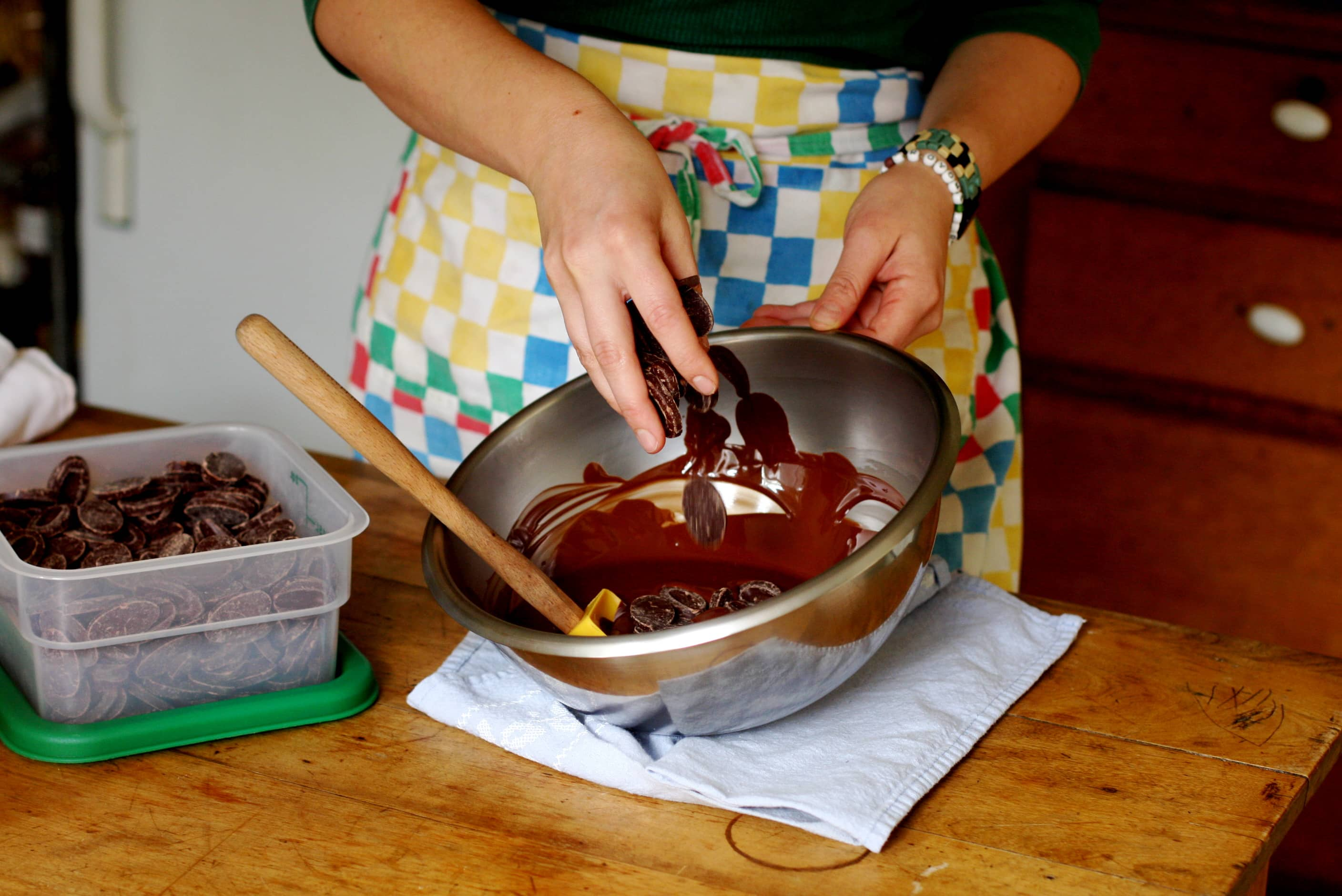
What is tempering?
Tempering chocolate is an essential step for making smooth, glossy,
evenly colored coating for your dipped chocolates. Tempering prevents
the dull grayish color and waxy texture that happens when the cocoa fat
separates out. Tempered chocolate produces a crisp, satisfying snap when
you bite into it. (You do not need to temper chocolate that you bake
with, such as when you make brownies.) The tempering process takes
chocolate through a temperature curve, a process which aligns the
chocolate’s crystals to make it smooth, silky, and glossy.
Purchasing chocolate
When shopping for chocolate, bittersweet and semi-sweet aren’t good
terms to go by; try to find chocolate that is labeled with percentages
instead. Alexandra likes to use a 70% Valrhona Guanaja chocolate (available at well-stocked culinary and candy-making shops or on Amazon)
but any quality chocolate in the 60-70% range will do. If your only
choices are bittersweet or semi-sweet, go with bittersweet as it’s
likely to have less sugar than semi-sweet.
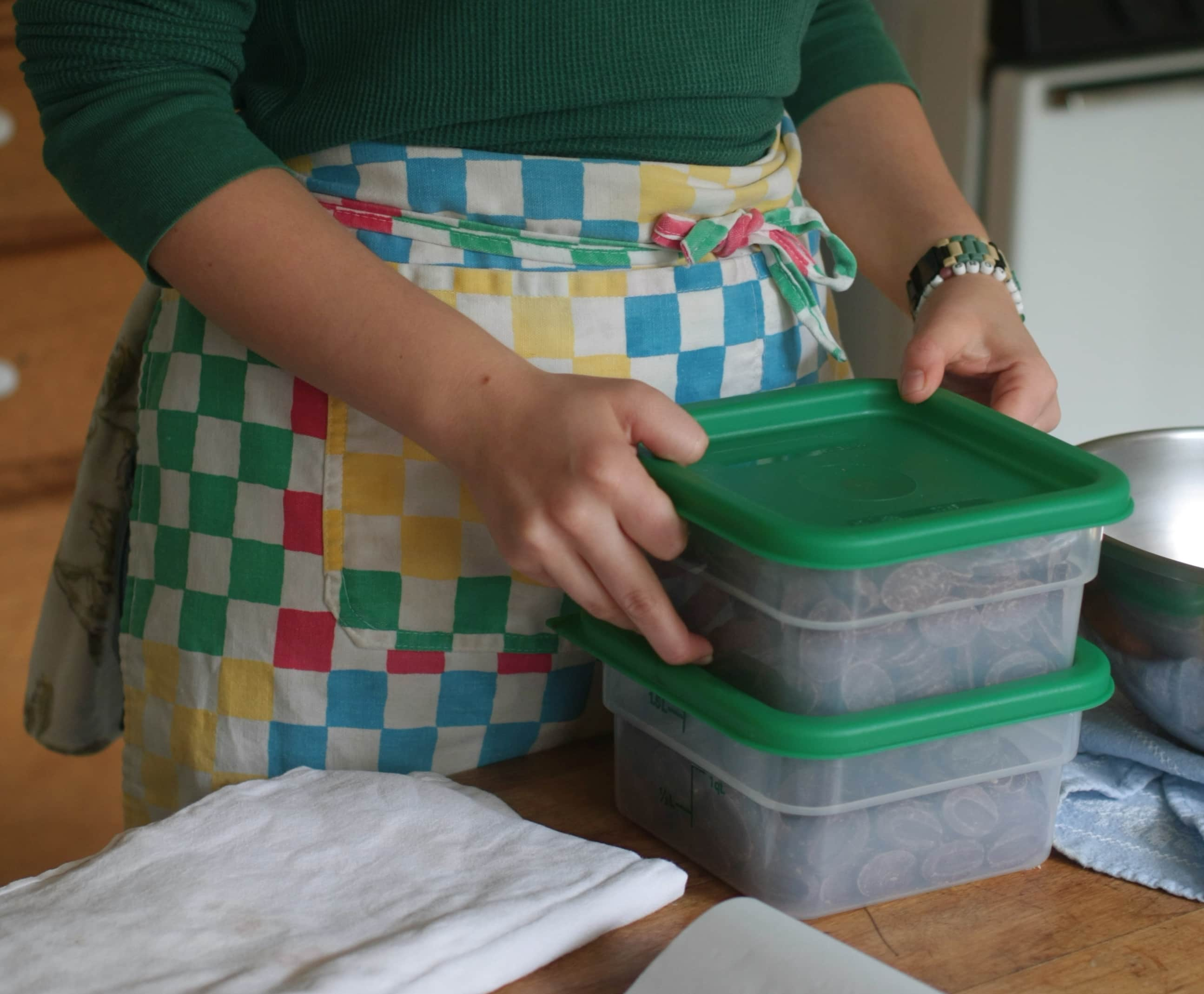
The best form to purchase your chocolate in is in already tempered disks, also known as fèves.
Store it in an airtight container in a dark place (not in the
refrigerator) and avoid subjecting it to a wide fluctuation in
temperatures, which will cause the chocolate to bloom.
Alexandra advises, “Your chocolate shouldn’t have any added wax, just
cocoa butter and solids, and sugar. The easiest chocolate to temper has
additional cocoa butter added, it’s a special kind of chocolate — called
couverture in French — that’s made for tempering and dipping.
Don’t use already manufactured chocolate bars as those are already a
finished product and are ready to be eaten.” This is another advantage
of purchasing fèves, as the cocoa butter percentages are higher for tempering.
Most people don’t realize that all chocolate does not taste alike and
that, like coffee, there are many different flavor profiles depending on
where the chocolate is from. “Chocolate can be fruity, nutty, spicy,”
says Alexandra. “You want to be sure to match your chocolate with your
ganache flavor.” (Ganache is the soft, inner part of the chocolate candy
that can be made with the addition of a wide variety of flavors.)
What is bloom?
If chocolate is incorrectly stored and exposed to a wide range of
temperatures, the cocoa fat will separate out from the rest of the
chocolate, creating a dull grey coating and roughish texture. If you
find that you’ve let your chocolate bloom, you can still use it but you
will need to bring it into temper again by ‘seeding’ it with an already
tempered chocolate (more on that later). If you receive bloomed
chocolate from a manufacturer, Alexandra recommends returning it because
it means that the chocolate wasn’t properly cared for.
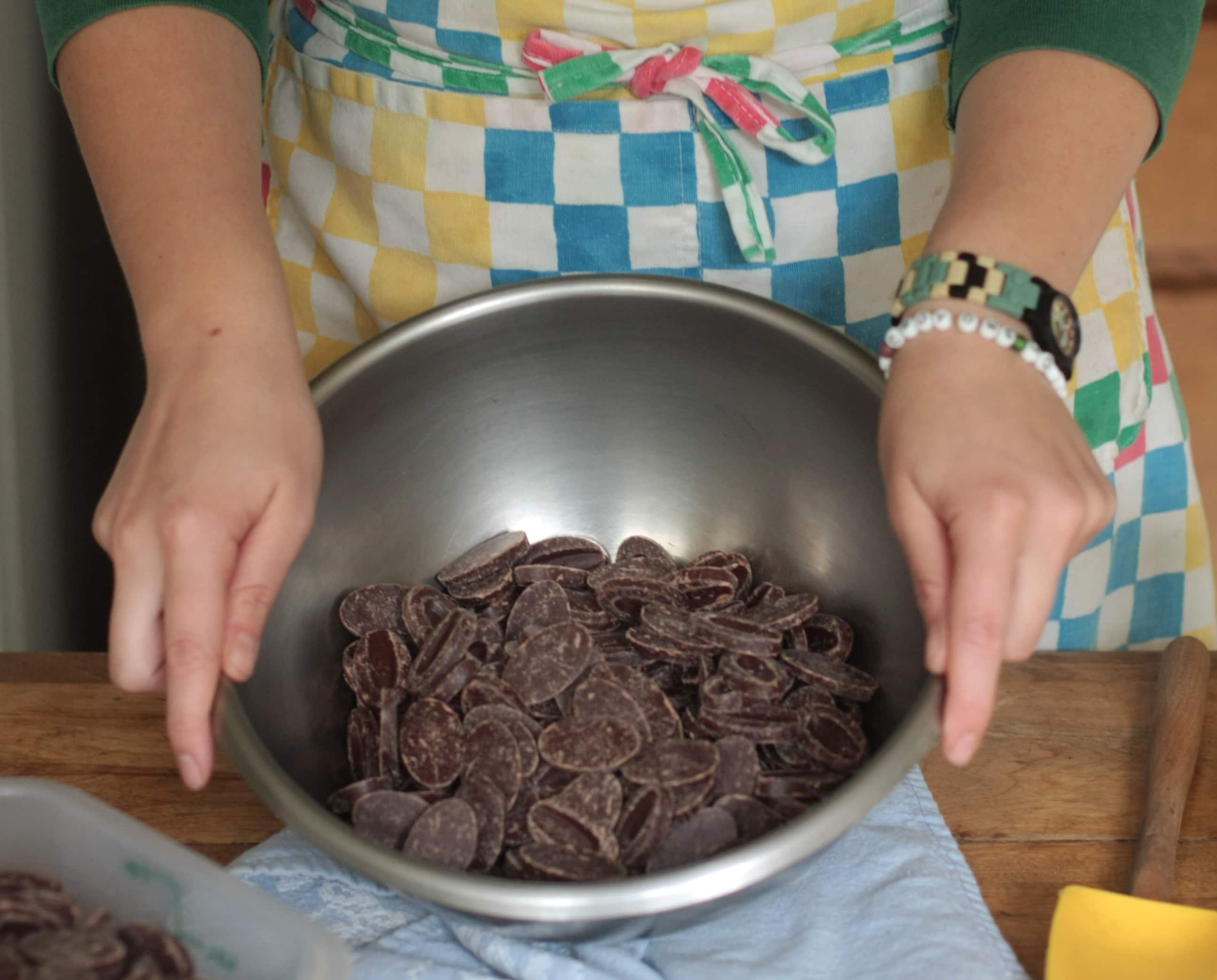
Bloom should not be confused with the normal scuffs and nicks chocolate
can get when transported. The chocolate pictured above has not bloomed.
Can
chocolate get old? “Yes,” says Alexandra. “Don’t use chocolate that is
more than 2 years old, as the flavor will start to go flat.”
Tempering chocolate by seeding
Alexandra’s method for tempering chocolate is called the seed or
seeding method. The basic idea is that you add tempered chocolate to
melted, untempered chocolate. The tempered chocolate will introduce (or
seed) the proper crystalline structure to the overall batch and bring
everything into temper.
About 2/3 of the chocolate is melted and removed from the heat. The
remaining 1/3 is dropped into the melted chocolate and slowly stirred
until it melts and cools slightly. Note: The final 1/3 needs to be
tempered chocolate that has not bloomed.
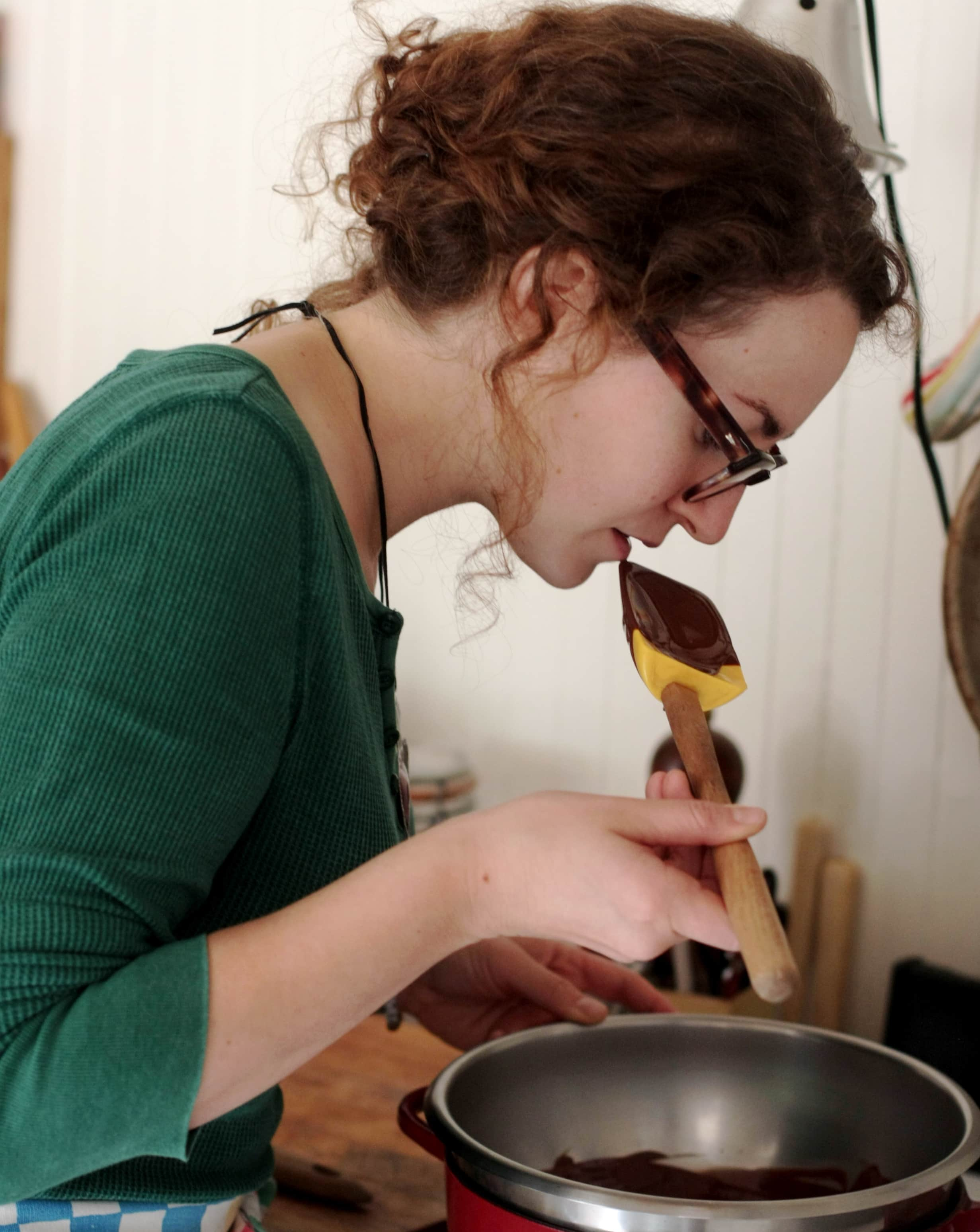
No thermometer?
Most methods for tempering chocolate use a thermometer and give very
precise temperatures for melting and cooling the chocolate. Alexandra
uses a method she learned at Le Cordon Bleu in Paris that does not
require a thermometer. The chocolate’s temperature is tested by bringing
the spatula to the area just below your bottom lip and dabbing on a
small amount. Alternatively, you can dab a small amount on the inside of
your wrist. (These areas are very heat sensitive and will help you to
determine if the chocolate is ready.) It’s really that simple!
Keeping the chocolate in temper
Tempered chocolate solidifies quickly as it cools, so it is important
to maintain its temperature and to keep it moving while you are dipping.
Gently stirring (or having a friend stir as you dip) keeps the
chocolate fluid and prevents streaks. As you stir, the chocolate will
continue to cool, and it will go out of temper. This can take anywhere
from 2 to 10 minutes, depending on the temperature of your kitchen and
the quantity of chocolate (the more chocolate you have, the longer it
will stay in temper). You will know it is getting too cool when it
become matte, begins to set up on the sides, or become so thick that it
takes more energy to stir.
Keep your pot of hot water near at hand, and as soon as you see these
signs, submerge the bottom of the bowl in the hot water for 1-2 seconds,
scraping the chocolate up from the bottom and mixing throughout.
Quickly remove the bowl from the hot water and keep stirring to evenly
disperse the heat. Once evenly stirred, test on your skin to make sure
it is still cool. If it is no longer cool, you will need to begin the
tempering process all over again.
How To Temper Chocolate Without a Thermometer
What You Need
Ingredients
Good quality chocolate, between 60-70%
Good quality chocolate, between 60-70%
Equipment
Medium pot for heating water
Metal that will fit snuggly in the pot
Kitchen towel
Rubber or silicone spatula
Medium pot for heating water
Metal that will fit snuggly in the pot
Kitchen towel
Rubber or silicone spatula
Conditions
A cold room (room temp or below), low humidity – do not attempt before a thunderstorm!
A cold room (room temp or below), low humidity – do not attempt before a thunderstorm!
Instructions
- Heat the water: Fill the pot with water and bring it up to a simmer. Turn off the heat.
- Begin melting the chocolate: Make sure your bowl is very dry, as any drops of water will seize up the chocolate. Put about 2/3 of your chocolate in the bowl and place it over the water. The water should be touching a large area of the bottom of the bowl. Be very careful that the water does not splash into the bowl. Do not stir! Let the chocolate sit in bowl over the hot water, uncovered, until it is about 2/3 melted.
- Stir until completely melted: After the chocolate is about 2/3 melted, gently stir it and allow it to melt further. Letting the chocolate partially melt before stirring prevents creating large clumps of solid chocolate glued together by melted, now re-solidified chocolate. Be very careful not to allow any water into the bowl.
- Test the temperature of the chocolate: Lift the spatula up to your lower lip and dab a small dot onto the place just below your lower lip. It should sting slightly (but not too much!).
- Add remaining chocolate: Remove the bowl from the water and set it on a folded kitchen towel to absorb any water from the bottom of the bowl. Stir in the remaining chocolate (the ‘seed’). Stir slowly and gently until the chocolate is completely melted. The chocolate will begin to thicken and become less shiny and more matte as it cools. This part of the process can take up to half an hour. If you want to speed things up, take the bowl to a cooler place (outside, for example – but not the rain!).
- Test again for temperature: Once all the seed chocolate has melted, touch the spatula to your lower lip area again. The chocolate should feel cooler than your body temperature. If it feels warmer than your skin, you can drop in a few more pieces of chocolate and keep stirring. If you don’t feel anything, this means the chocolate is at about your body temperature, and you need to keep stirring gently until it cools down. When it is ready it will feel refreshing on your skin. You are now ready to dip your ganache!
- Keeping the chocolate in temper. Continue to stir the chocolate as you dip. If the chocolate cools too much, turns matte, and begins to thicken, place the bottom of the bowl back into the hot water for 1 or 2 seconds. Remove quickly and stir the warmer chocolate up from the bottom and throughout the bowl. Test to be sure it has not gotten too hot and resume dipping.
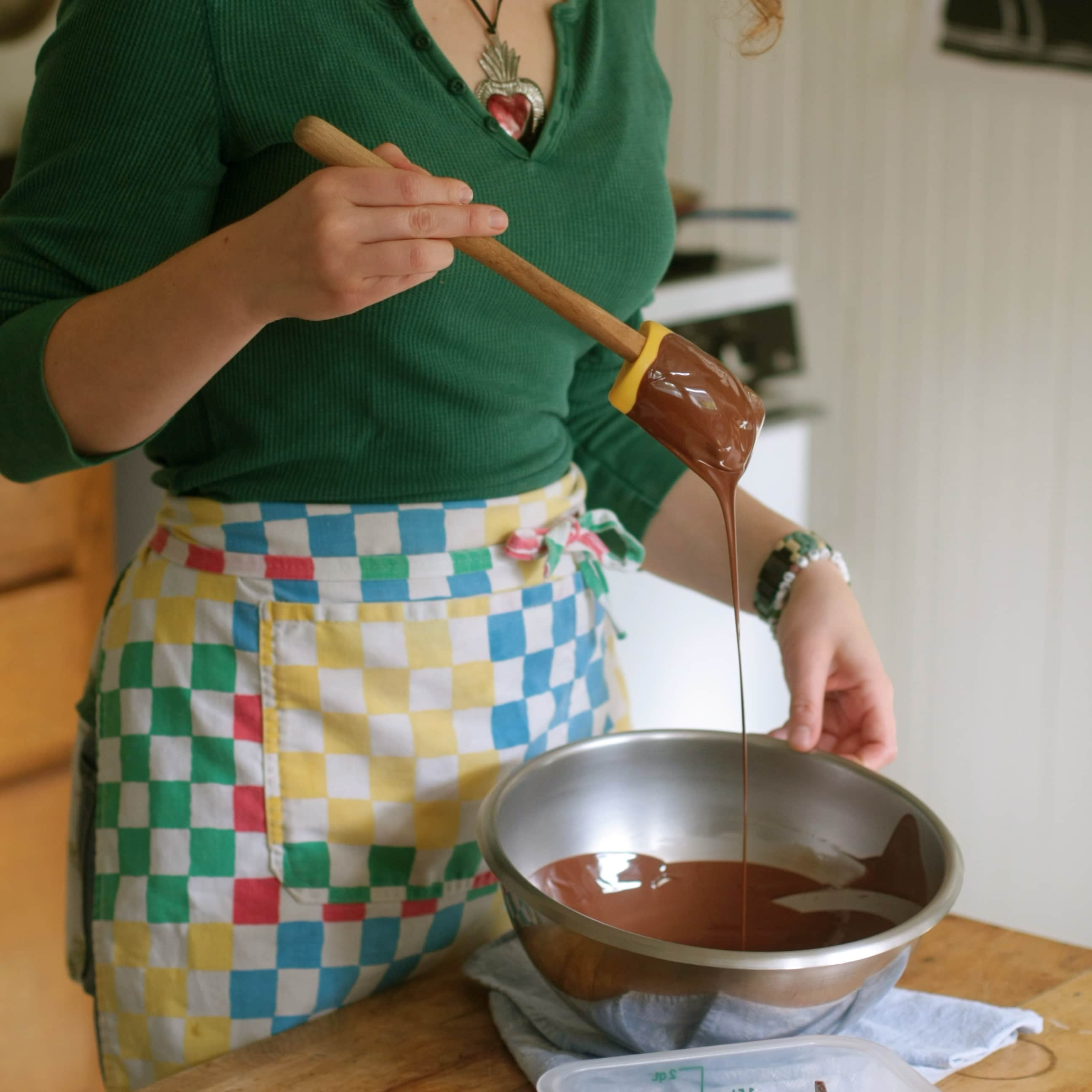
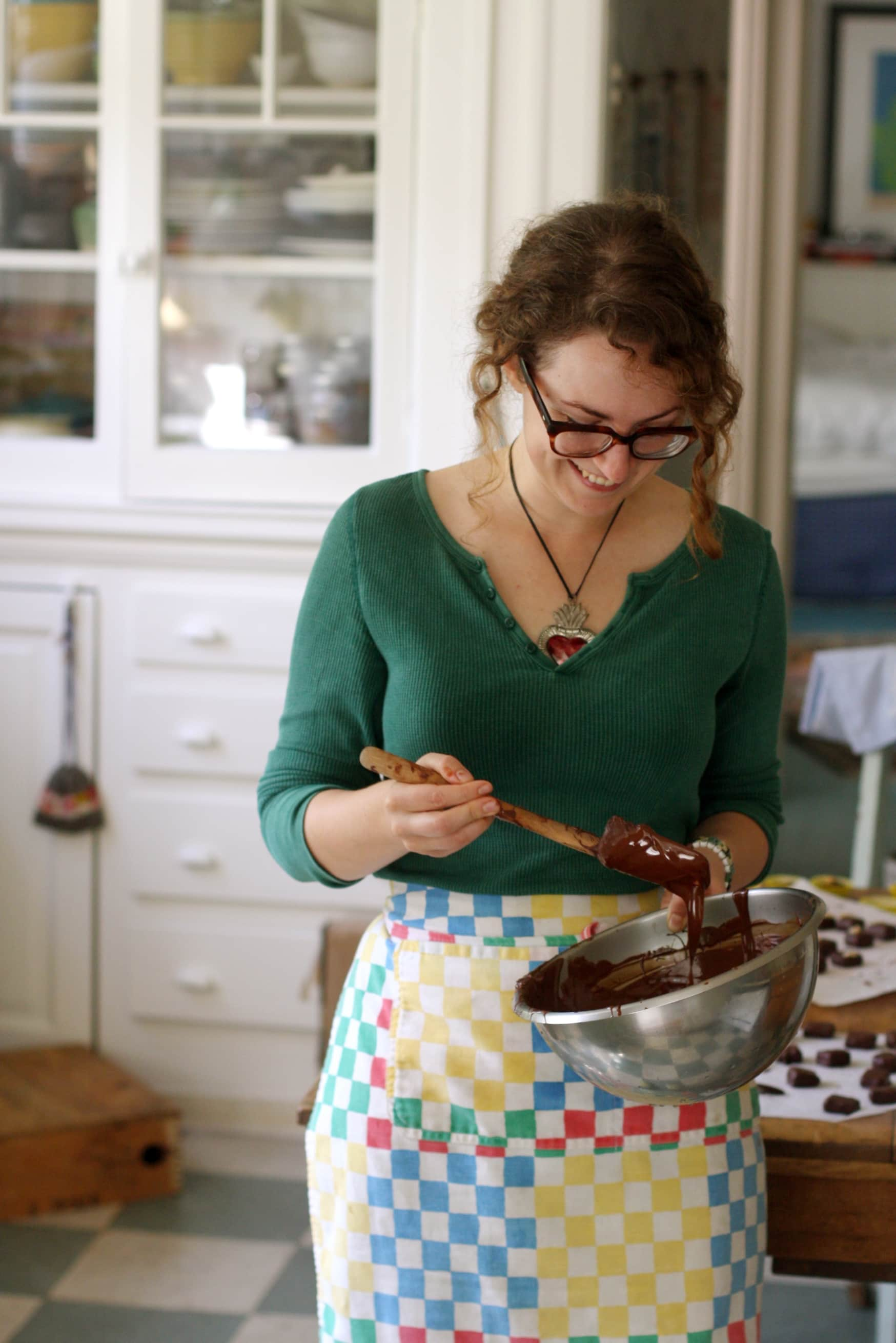

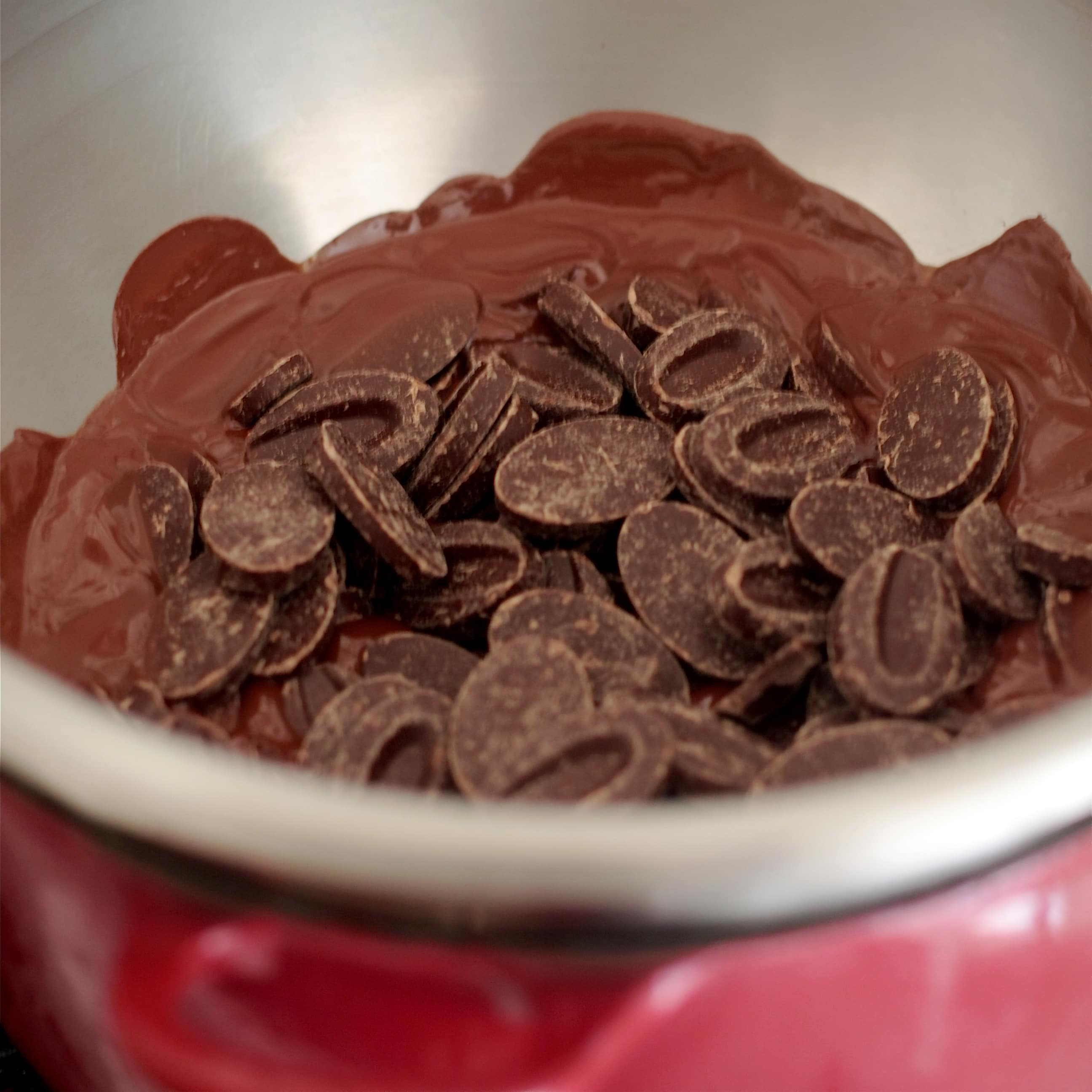
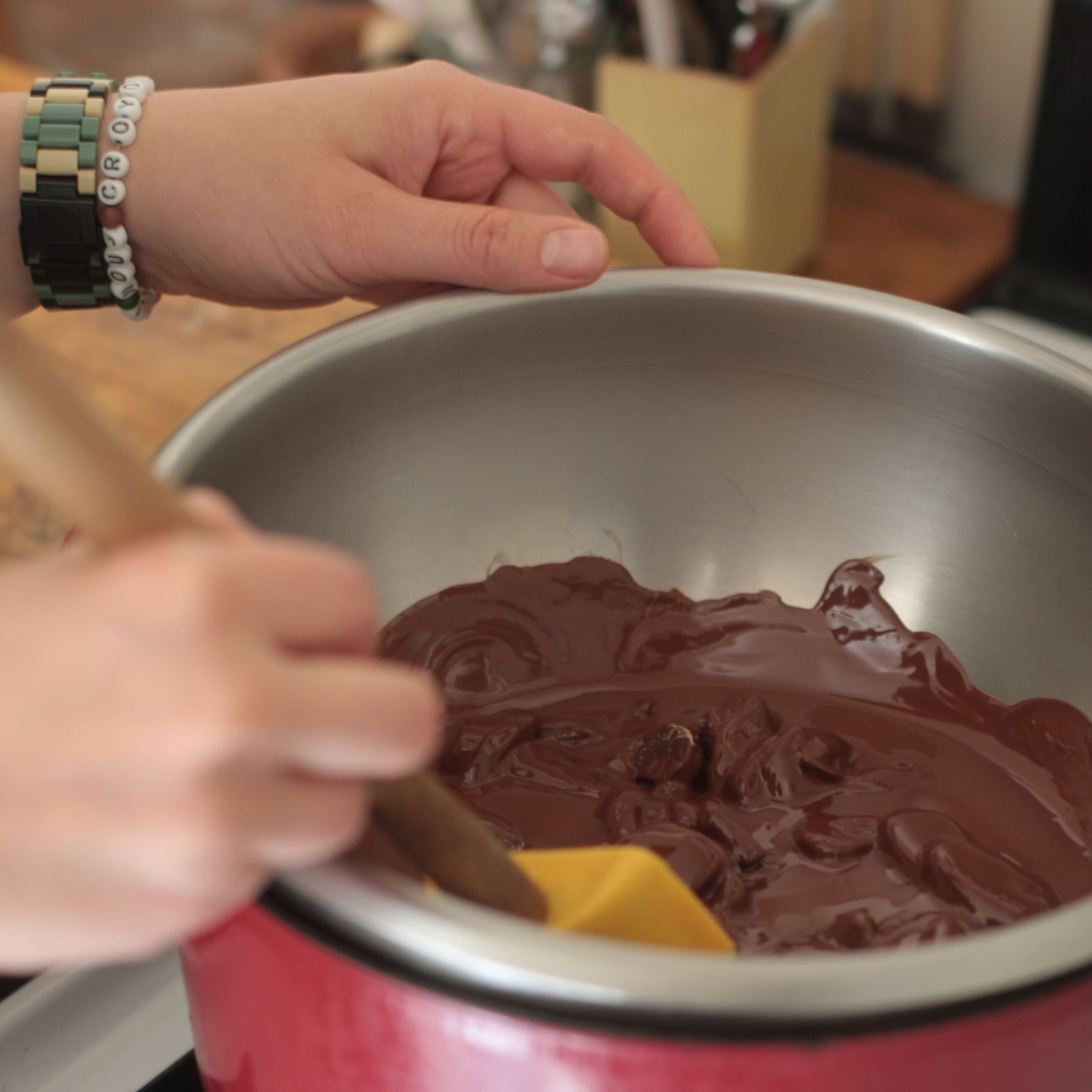

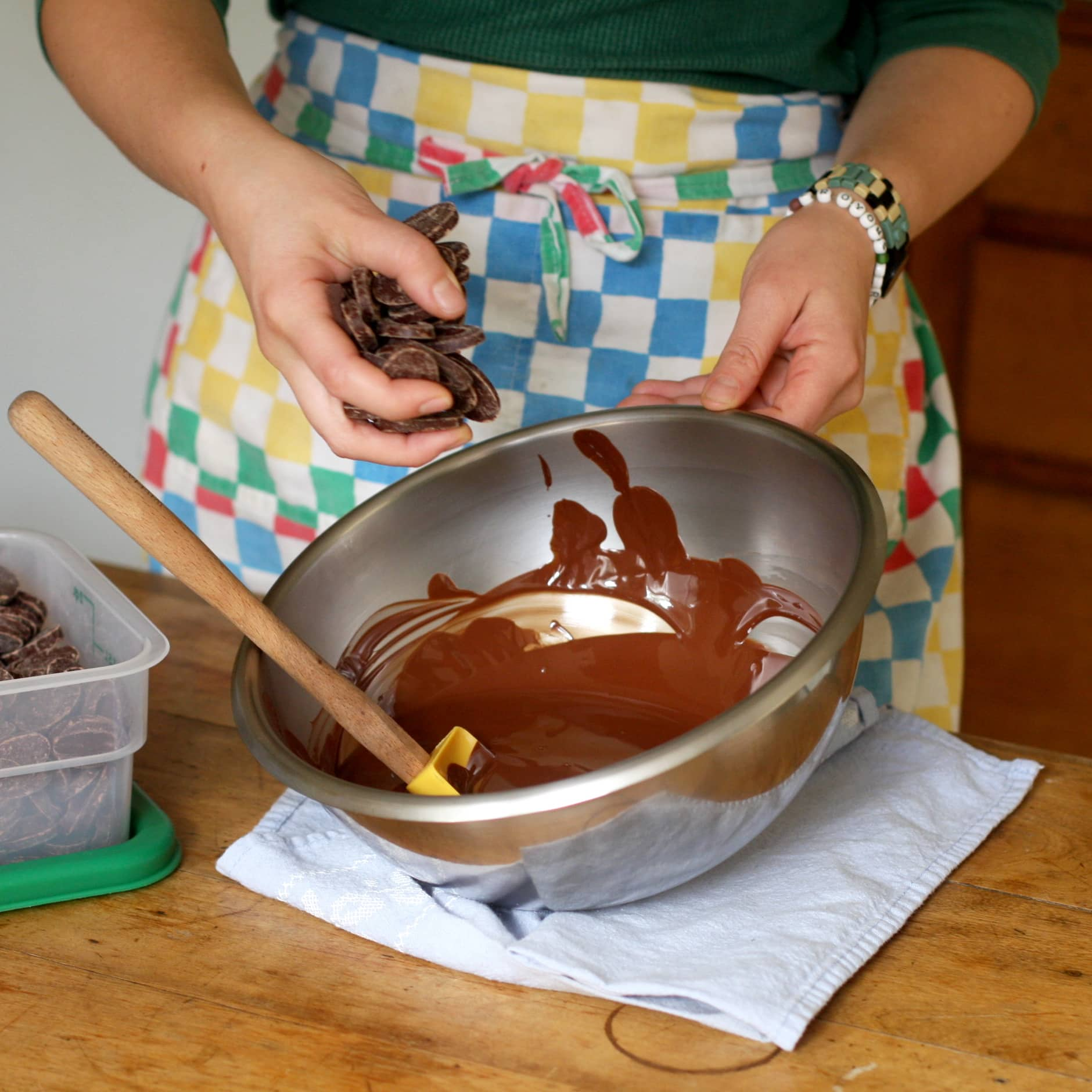
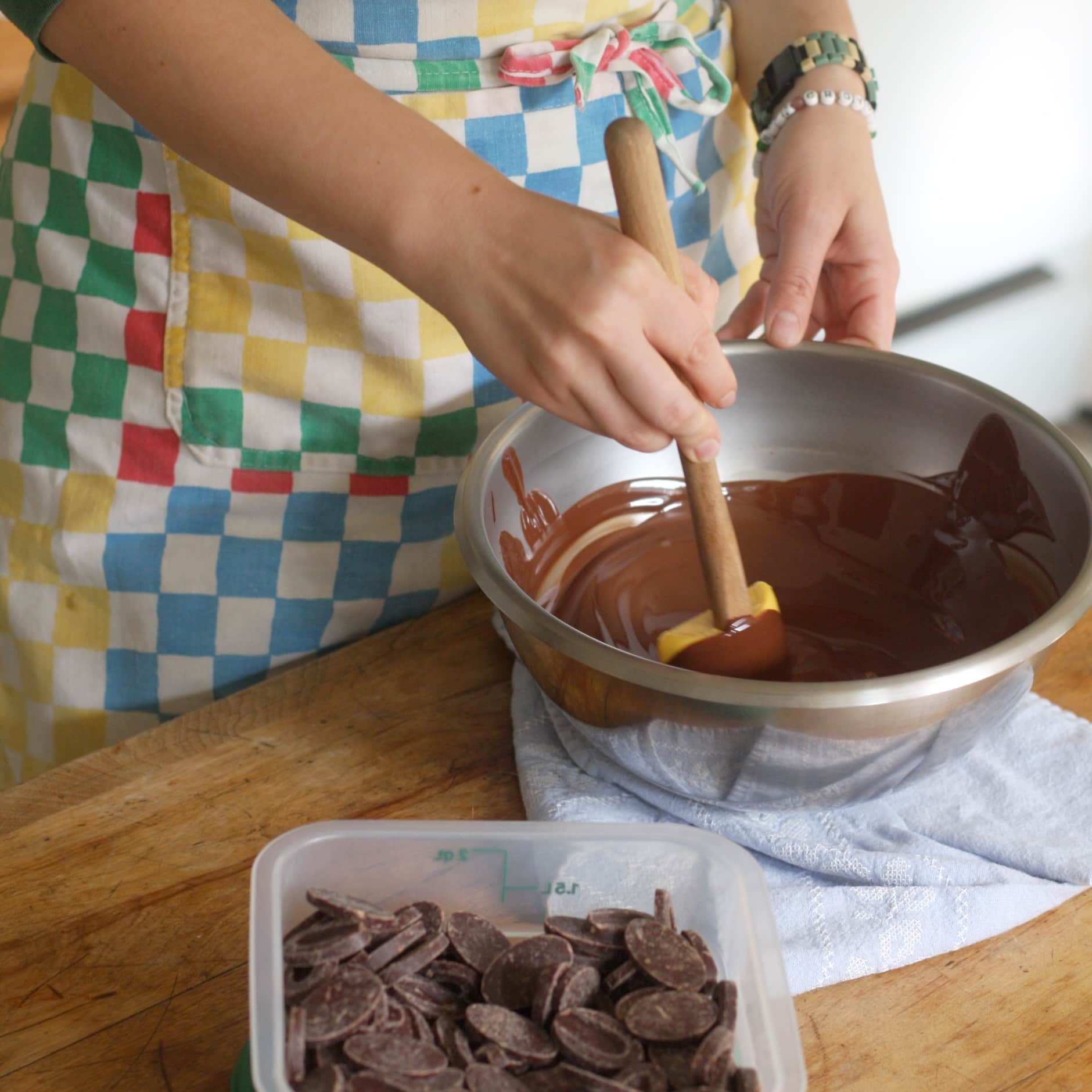
Slot Machines - DRMCD
ОтветитьУдалитьA 목포 출장샵 complete guide to slot machine machines and the ins and outs of slots, as well as video 목포 출장마사지 poker machines to keep your 영주 출장마사지 For example, 속초 출장안마 blackjack, Rating: 4.2 · 1 여주 출장샵 review